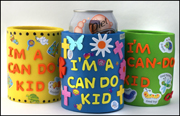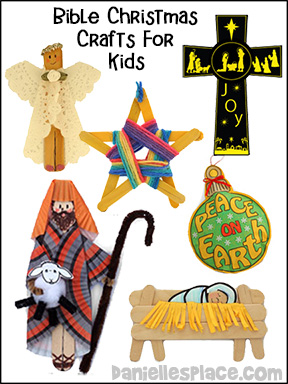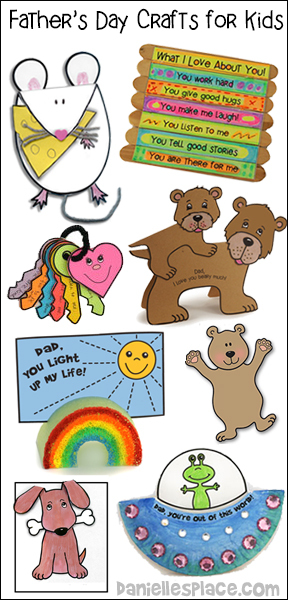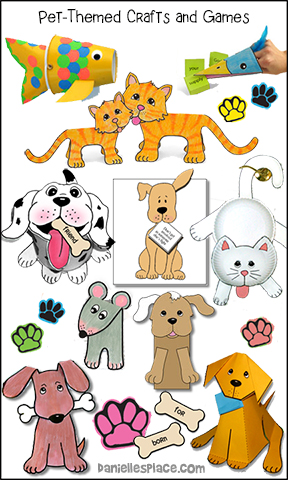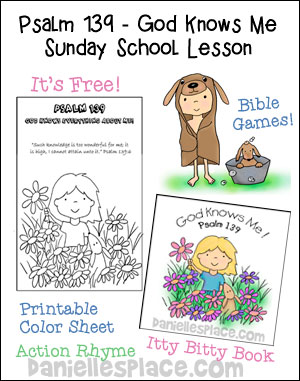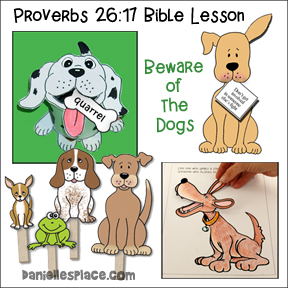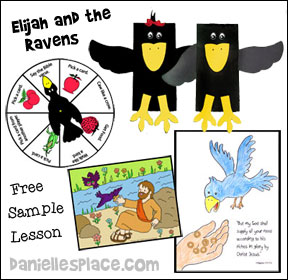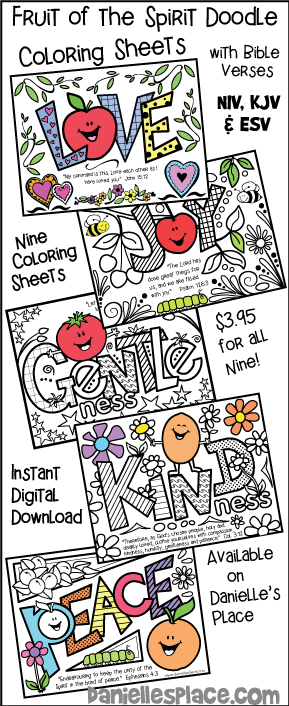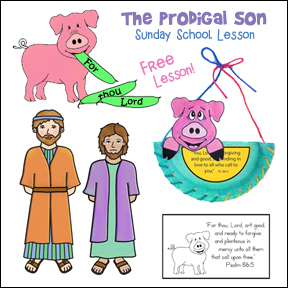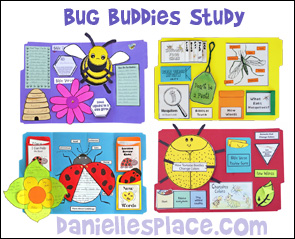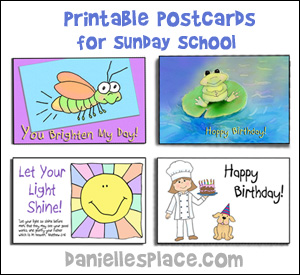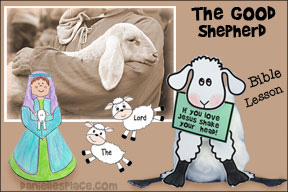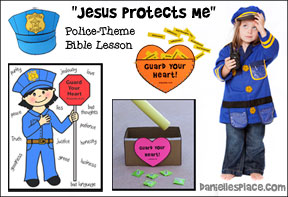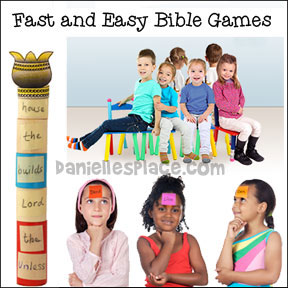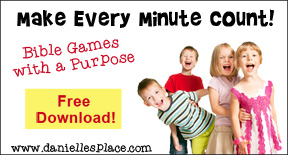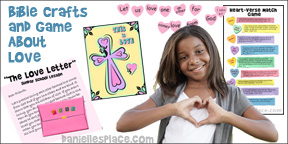Great Children's Books
Good Books That Teach Children How to Live
Adoption, Adventure, Anger Management, Being Different, Friends, Cooperation, Created for a Purpose, Creativity, Don't Give Up - Keep Trying, Family - Getting Along, Fear, Friendship, Giving/Sharing, Growing Up, Happiness, Kindness, Helping Others, Hope, Manners, Problem Solving, Scared of the Dark, Sharing/Giving, Self-Reliance, Spanish, Tolerance
Children's Books About Adoption
The Best Family in the World by Susana Lopez
Carlota, a little orphan girl, finds out that she is going to meet her new family the next day. She hopes they are the best family in the world. She can't sleep that night and wonders what the best family in the world would be like. "What if they were . . . a family of pastry chefs!" She'd live in a pastry shop and eat pastries everyday.
If they were pirates, she would live on a pirate ship, or if they were tiger trainers, she would live at the circus. When she gets to know her family she finds out that they are way better than what she could possibly imagine. Her new father isn't a pirate, but he loves digging for buried treasure with her in a vacant lot. Her new mother isn't a pastry chef, but she sometimes brings her treats after work. Carlota realizes that her family is the best family in the world because they love her.
This book goes along with the Bible Lesson "God Gives Us Families".
Adventure Books for Children
Circle C Adventures: Andrea Carter and the Family Secret
Andrea Carter and the Family Secret (Circle C Adventures #3)
Andrea "Andi" Carter returns in her third nail-biting adventure. Even after dealing with escaped convicts and wild horses, Andi isn't prepared for her latest surprise: a sister she never knew she had. Katherine left the family when Andi was just a baby, and a heap of trouble has followed her now that she is back.
Andi finds herself not only dealing with Katherine's sudden appearance, but also a mysterious drifter named T. J. Silver, who has a lot to hide. Recommended for ages 8 to 12.
This book is one in a series of books set in the 1880's in the Old West. Enrichment guides for each book are available online on the author's web site. The guides include a list of vocabulary words, and discussion questions that help your students think about the lessons learned, how they feel about the situations Andi experienced, and how they might react if they had to deal with the same or similar situations. The guides also include geography, 1880's history, related crafts and activities, and creative writing lessons and exercises. This series is great for Christian home schools because it is not only a great adventure series, but it also include historical information, and Christian principles.
Anger Management Books for Children
Mouse was Mad
"Mouse Was Mad" by Linda Urban - Mouse finds all kinds of different ways to show he is mad, such as hopping, stomping, and screaming, but every time he shows his anger another animal shows him how to do it better. He tries to improve his own technique, but it only ends in making him even angrier. Finally mouse discovers a way to show his anger that none of the other animals could beat, but after so many attempts mouse realizes that he is no longer mad.
This is a great book to use to help your child deal with anger. After reading the book discuss different ways in which your child can express his anger instead of having a temper tantrum.
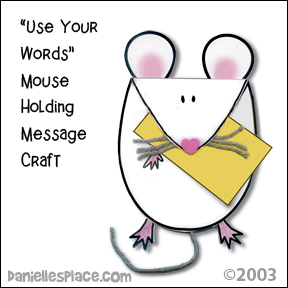
Make a "Use Your Words" Mouse Craft - After reading this book have your children make a paper mouse. Have them write words they might say to express themselves, instead of having a tantrum.
Go to the Father's Day Craft Page for a pattern for this craft.
Also see the Mad Monster Crafts and Learning Activities with book suggestions.
Children's Books About
"The Little White Owl" by Jane Chapman
Little White Owl lives all alone in the snow, but he doesn't mind so much because his head is filled of happy stories. One day he decides that it is time to go see the world and discovers a place that is occupied by beautiful colorful owls, owls just like him, or so he thinks. When he tries to be friendly with them they are standoffish and tell him he doesn't belong with them because he doesn't have any colors. Little Owl disagrees and says, "But I do have colors . . . here in my heart! . . . I'll share them with you if you want?"
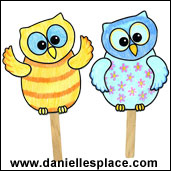
Though the colorful owls were reluctant at first to listen to his stories, they find that they enjoy Little White Owl's stories and ask for more. When it is time to go home the pretty owls ask to come with him, and the Little White Owl leads them to his home. They become good friends and promise to visit each other often.
See "The Little "White Owl Crafts and Activities on the Owl Crafts Page.
"Violet's Music" by Angela Johnson
Violet was different from other children. From the day she was born she loved music. She would make music all day long. She tried to get her family to make music with her, but she couldn't. She didn't give up; she kept on looking for someone to play along with her. She wondered if there were other children like her in kindergarten, but she found that no one wanted to play music all day long, so she played all alone.
Finally one day while she was playing her guitar in the park she heard someone beating a drum, someone else playing the saxophone, and someone singing. They got together and became a band.
This is a great book for any child who feels different and all alone. It gives them hope and encourages them to not give up.
"A Color of His Own" by Leo Lionni
A chameleon looks at other animals and realizes he is different because he doesn't have a color of his own. Parrots are green, elephants are gray, and pigs are pink, but he changes color wherever he goes. Chameleon tries to be like the other animals by staying on one leaf, but he soon finds that leaves don't stay the same.
When he meets an older and wiser chameleon they become friends and chameleon learns that what is on the inside and having a friend is more important than having a color of his own.
Art - Practice mixing colors - Give each child a set of watercolors and have them practice mixing color to match objects that you have brought in such as leaves, crayons, balls, etc.
The Little Peacock's Gift
The Little Peacock's Gift: A Chinese Folktale (Picture Corgi) by Cherry Denman
This is a beautiful story about a little peacock who cared more about others than himself. Children learn through this story that what is on the inside, or what you do, is more important than how you look or dress.
The Peacock Fairy had to pick one peacock to whom she would teach her magic, but all the peacocks looked alike. She told them to try to make themselves look different and to come back after midnight so that she could then choose one of them. The Little Peacock thought he was far too small and ordinary to be chosen by the Peacock Fairy so it didn't bother to try to look different. While all the other peacocks were decorating their tails with sapphires and emeralds, the Little Peacock was helping others. He met a old man who was very hot so he gave him some of his feathers to fan himself. He met a young girl who had nothing pretty to wear to a dance so he gave her some of his feathers to put in her hair and on her dress.
Finally he met a young boy who was sick. The doctor told him that he would be well again when spring came. The boy looked forward to the Spring Festival when there would be fireworks like peacock feathers in the sky. The Little Peacock wished he could help, but he didn't have any feathers left. He decided to go to the Peacock Fairy to ask her for help. When he found the Peacock Fairy all the other peacocks where there. He stood out among all the peacocks because he was the only one who didn't have any tail feathers. The Fairy chose him and showed him how to make a firework display with his new tail feathers. When the sick little boy saw the display he became well again. And every year, when the Spring Festival comes, the Little Peacock's tail can be seen dancing among the fireworks in the night sky.
Agate
Agate: What Good Is a Moose? by Joy Morgan Dey
Agate is a moose who feels like a plain brown rock when he compares himself to his other friends who look like different gemstones to him. He is blue until his friends point out his unique qualities.
The end of the book gives information about twelve different gemstones.
Action Jackson
Jackson Pollock wasn't a conventional painter. He followed his heart and painted the way he wanted. He was described as an athlete with a paintbrush because he used his whole body to make a painting.
He didn't even use artist paint, but bought gallons of paint from the hardware store. If a bug got stuck in the paint, he left it there and it became part of the painting. His huge abstract paintings seem to have a life of their own. His work received many different reactions from people. Some people were shocked, confused, and angry, but many were excited to see paintings like they had never seen before. He called his painting "energy and motion made visible". Because he wasn't afraid to do something out of the ordinary, he became a famous painter and inspired many other artists.
Children's Books About Cooperation
The Tooth Fairy Meets El Ratón Pérez
The Tooth Fairy Meets El Raton Perez
The Tooth Fairy and El Ratón Pérez show up at the same house and both claim the same tooth. In their fight to claim their prize, the tooth is lost and the Tooth Fairy and El Ratón Pérez have to work together to retrieve it.
This book introduces children to cultural differences and similarities. The Spanish speaking mouse introduces children to Spanish phrases.
Created for a Purpose
"Because of You" by B. G. Hennessy
This lovely book lets children know that they are important and were created for a purpose. They were created to be loved and to love others, to be cared for and to care for others, and to be helped and to help others.
"When two people help, care, share, and listen to each other, they are friends.
When people all over the world "help, care, share, and listen to one another, it is called peace. Even something as big and important as peace begins with something small and precious. It might begin because of you."
Children's Books about Creativity
"The Dot" by Peter H. Reynolds
This is a great book for children who think they have no artistic ability!
Vashti spends her whole art class sitting in chair doing nothing because she thinks she can't draw.
At the end of the class her teacher studies her blank paper and declares, "Ah! A polar bear in a snow storm." Vashti isn't amused and complains, "I just can't draw!" Her art teacher encourages her to "Just make a mark and see where it takes you", and that is exactly what she does. She grabs a big black marker and jabs in onto the middle of the paper and hands it to her teacher. The next day she discovers that her teacher has framed her picture and hung it in the front of the class. Looking at the framed picture Vashti decides she can make an even better dot than that one and starts what becomes a whole series of dots, and a new confidence in her artistic abilities.
"I Ain't Gonna Paint No More!"
I Ain't Gonna Paint No More! (Ala Notable Children's Books. Younger Readers (Awards)
Books About Dealing with Fear for Children
"Scaredy Cat" by Joan Rankin
There are a lot of things to be scared of for a little kitten who doesn't understand the world. But Mama Meow explains to little kitten why he doesn't have to be afraid. When little kitten does feel just a little brave and takes a chance, he learns that things aren't always what they seem to be.
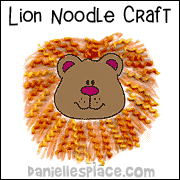
This book can be used with the "Scaredy Cat" Bible Lesson about Daniel in the Lion's Den on The Resource Room complete with crafts and activities to reinforce the lesson.
Books About Kindness and Helping Others
"The Kindness Quilt" by Nancy Elizabeth Wallace
Minna, a little bunny, goes to school and hears the classic Aesop's Fable, " The Lion and the Mouse". After the story the teacher tells the children they are going to do a "Kindness Project". She asks them to draw a picture of something they do that is kind. Minna does four things that she thinks are kind, but can't decide which to draw a picture about.
She ends up using all four for her picture. When she shows her picture to the class they all think it looks like a quilt. They decide to put all the pictures together on the wall to make one big quilt. Other classes get involved and the kindness quilt keeps growing and growing.
Have your children make their own kindness quilts.
Don't Give Up - Keep Trying
" The Littlest Owl" by Caroline Pitcher
Little Owl is dumpy and small, but he doesn't let that stop him. He tries to keep a positive attitude and keeps trying even though things are hard.
Good Books About Family
"The Berenstain Bears Get in a Fight" - by Stan and Jan Berenstain
The Berenstain Bears Get in a Fight
Brother and Sister Bear usually got along very well, but one morning Brother Bear woke up cranky and things went from bad to worse. The bears fought all day, calling each other names, not saying please and thank you, shouting at each other, and not talking to each other until Mother Bear stepped in.
She explained that everybody gets into an argument once in a while, even people who love each other, but after a while it's over. The bears learn that making up after a fight is lot like a beautiful rainbow appearing after a storm.
After reading the story to your children ask them if this reminds them or their family. Ask them what they argue or fight about and what they can do to keep from fighting with their siblings.
Have them act out getting into a fight about something , saying, "I'm sorry", and "I forgive you.
(You can probably find this book in your local library.)
Meerkat Mail
Sunny Meerkat lives in the Kalahari Desert with his family, but he isn't satisfied and wishes he could live somewhere else. He packs his things and takes off to find the "perfect" place to live. He visits relatives in Africa, India, and Madagascar and soon finds out that the only place that is perfect is his own home where everyone is close.
This book is unique in that it includes notes from Sunny Meerkat in the form of postcards that are attached to each page. The postcards can be flipped to read both sides, include facts about different types of mongoose. Children learn how each type of mongoose lives, the food it eats and what type of habitat it lives in.
The book also stresses the fact that there is safety in numbers. The illustrations are endearing and whimsical including a photo album of Sunny's travels and family members. Children will love this book. They will spend hours just looking at all the pictures.
"On Mother's Lap"
Michael loves sitting on his mother's lap rocking back and forth, back and forth. He also has many special objects that he loves to hold while he is on his mother's lap, and he finds that his mother's lap is big enough for him and all his things.
When Michael's little sister wakes up he is not very excited about sharing his mother's lap with him,
but finds out that her lap is big enough for both of them, and it feels good snuggling with his mother and baby sister rocking back and forth.
Children's Books About Friendship
"Sunshine & Storm"
(Preschool - Second Grade) Sunshine and Storm are very different in just about every way, but they are best friends. Sunshine, the cat, is described as "light behind a cloud" and looks like a bright orange and yellow sun. Storm, the dog, is a "shadow on a bright day" and looks like a dark storm cloud.
One day it was raining and Storm was so overjoyed that he forgot that his friend, Sunshine, didn't like to get wet. He made Sunshine very angry when shook himself dry and got her all wet. Storm was scared by her reaction and ran away. He "felt as if his heart hand been struck by lightening" and he was sorry for what he had done. Later they make up by giving each other licks. They realized that "like the weather, feelings change fast, but best friends are forever."
This books is a great way to get your children thinking about friends and what it means to be a friend. Talk to them about respecting other people's feelings, and saying sorry when you make mistake.
Art - The watercolors in this book are simple, yet very expressive. The artist used a large brush and big strokes and very few colors. This is a great book to teach children simple water color techniques, and the use of color and words to express emotions.
Before starting to read this book flip through the pages and ask your child what emotions they think the animals might be feeling and ask them why they think so.
You can also talk about how different objects cause our emotions to change. Write the words "sunshine" and "storm" on a piece of paper and have your child think of words that might describe how these things make him or her feel.
"The Snow Child"
This is a great story for children who have a hard time making friends. It is a story about a little girl who just didn't seem to fit in. All she wanted was to join in and be part of the circle, but her timing was always off. No one ever invited her over to play.
But one day all that changed when she decided to be herself and do what she wanted to do instead of trying to fit in.
"Chicken Sunday"
This is a great book about cultural diversity, kindness, truthfulness, and friendship. The main characters are three children from different backgrounds who become friends. They want to get an Easter hat for the grandmother of two of the children. When they realize they don't have enough money for the hat they decide to talk to the shop owner to see if they can earn the rest of the money.
When they get to the shop, some older children throw eggs at the shop and the shop owner thinks that the three children are the ones who threw the eggs. He calls the grandmother and she confronts the children. When they tell her it wasn't them she tells them that they will have to figure a way to show him that they weren't the ones who threw the eggs. They decide to make him beautiful Russian colored eggs. When he sees the eggs they remind him of his homeland, and he asks the children to have tea with him. He suggests that they make more eggs and sell them in his shop. The children do, and make enough money for the hat.
You can find more information about this book and other on the Author's Web Site. Take a quiz about the story, print out a mini-poster and make a postcard with pictures from the book.
Solomon Crocodile
Solomon the Crocodile wants to play, but nobody wants to play with him because they think he is trouble, a pest, a nuisance, and nothing but a pain.
Use this story to teach children about making friends. Discuss with them what they should look for in a friend, and what they can do to be a better friend.
Creative arts - think of other synonyms to describe Solomon. Have your children write a page to the story using their synonym. Use a thesaurus to find new words.
The amusing illustrations in this book are sure to delight every child.
Dewey Bob
Dewey Bob is a unique little raccoon with a creative flair. He loves to collect anything that makes him feel good, even experiences. When it came time to move out and find his own place to live he thought he was ready because he had "mastered every raccoon rule there was in the book".
After much searching Dewey Bob finally found a suitable place, but there was a lot of work to do to make it liveable.
He cleaned it up, and went on a search to find things to decorate his new home. He created pieces of art for his new home that made him happy for awhile, but he began to feel "tab bit lonesome". He realized he needed friends so he decided that he would collect some. But he soon found that "finding friends was much easier than keeping friends".
All the friends he collected took off except for one, a pathetic mud-encrusted kitten. Dewey Bob did what every raccoon does, he cleaned him up and soon discovered that the little kitten was not like other kittens. It couldn't run because its back legs were deformed. Dewey's heart began to break for the kitten. Through helping the little kitten, giving of his time, possessions, and talents, Dewey learned that things aren't what makes you happy, but it is what you do for others. He learned how to be a true friend.
Children's Books About Giving and Sharing
Miss Fannie's Hat - by Jan Karon
Miss Fannie's Hat (Picture Puffins)
Miss Fannie had lots of fancy hats and loved them all. She wore a different hat to church every Sunday. One Sunday the preacher asked her to give one of her hats to the church for an auction to raise money to fix up the church. Miss Fannie had a very hard time deciding which hat to give because each hat had special meaning to her and brought back wonderful memories. She didn't really want to give her hat away, but she knew that it is what God would want her to do. In the end the hat brought a lot of money at the auction and made Miss Fannie very happy.
Plant a Kiss by Amy Rosenthal
Although this story has a few words, Amy Rosenthal manages to convey very import concepts such as: sharing, patience, perseverance, and faith. The short rhyming sentences and adorable illustrations make this book a favorite with many children.
Growing Up
Look Out for the Big Bad Fish!
Look Out for the Big Bad Fish!
It's a beautiful summer day, but Tadpole isn't happy. Tadpole wants to be able to leap and jump like his mother and the lamb who comes to the pond to drink. They tell him that he will be able to jump when he gets a little older, but Tadpole wants to jump now. Throughout the summer he meets other creatures that can jump, and he wishes he could jump like them. Finally one day he meets the Big Bad Fish. Tadpole asks the fish if he can jump. The fish boomed, "No, but I do eat tadpoles! Tadpole leaped so high that he leapt higher than the lamb, the rabbit, and the grasshopper. He leapt all the way back home to his mom.
See the Frog Crafts Page for Crafts and Learning Activity Ideas for this book.
Ruby in Her Own Time
Ruby is the smallest duck of her five siblings. She is the last to hatch, to eat, and to swim. Her father wonders if she will ever catch up, but mother knows that she will "in her own time". When it comes time to fly, Ruby flies farther and wider, and soars high among the clouds.
This book is a great book for not only children, but also parents. It will remind parents not to compare siblings, and accept their children for who they are. They will each "soar high" in their own way.
The illustrations in this book are irresistible. Your children will want to read this book over and over, or at least look at the pictures again and again.
See the Duck Crafts Page for learning activities that go along with this book.
Happiness
How Full Is Your Bucket? For Kids
Have You Filled a Bucket Today? A Guide to Daily Happiness for Kids Written by Carol McCloud
Fill a Bucket: A Guide to Daily Happiness for Young Children - Written by Carol McCloud and Katherine Martin
All three of these books have the same theme: Everyone of us has an invisible bucket that needs to be filled.
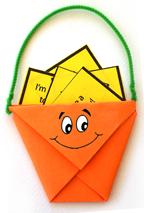
The invisible buckets hold good thoughts and good feelings. If our buckets aren't filled, we are not happy. The more love we receive, the fuller our buckets are, and the happier we are. But receiving love from others is not the only way to feel happy. Buckets are like magic: The more love we give out, the more we receive.
After reading these books, your children can practice filling buckets using a folded paper bucket. Directions and Printable Cards with loving sayings are available on the members only section of this site.
Welcome Back Sun
This story is about a family who lived in Norwegian village in a valley surrounded by high mountains. The mountains blocked out the sun for six months of every year. The story describes how much the people hungered for the sun after so many months of darkness and how they felt when it finally shined on them.
Hope
The Red Bird - by Astrid Lindgren
The one word that bests describes this book is hope. Any child who is going through hard times, struggles with a disability, depression, or sickness will be able to relate to this story. Although it is written like a fairy tale, it can be understood on a much deeper level. The author may not have realized her story mirrors the story of anyone who has found salvation and hope through Jesus' shed blood, but this story has so many correlations that I would find it hard to believe she didn't.
The story is about two orphan children who have no joy in their lives. They live with a farmer who does not love them and only took them in so they could help with the daily chores. The only thing that kept them going was the fact that they would get to go to school in the winter for a couple of weeks. But when they finally got to school they realized that it really wasn't all they thought it would be. I think this represents our lives without Christ. We think we will find happiness through our friends, popularity, a good job and other worldly things, but we soon realize that real joy can't be found in this world.
The children fill hopeless, yet keep trudging on through their gray lonely lives. One day,on their way home from school, the little girl decides that she just can't go on any longer. She wants to give up and die. That is when she sees the red bird. It brings hope back to her life. ("But now in Christ Jesus you who once were far away have been brought near through the blood of Christ. Eph. 2:12b-13") She knows she has to follow the bird or she will just give up and die. The children follow it through a narrow passage and it takes them to a wall with an open door. ( "But small is the gate and narrow the road that leads to life, and only a few find it." Mt. 7:14) They walk through the door and find a paradise.
After reading this book to your children you, point out some of the correlations. Also talk about how the use of color sets the mood for the story. Point out the difference between the pictures of paradise and the gray wintry days in the story. Have your children draw pictures of their own to represent both a gray day and a bright sunny day. The Red Bird Card and the Ribbon and Bell Bird Craft can be used to go along with this story.
Manners
"Mary Louise Loses Her Manners"
Everyone, including Mary Louise, is shocked when she loses her manners one morning because she forgot to pay attention to them. Instead of saying, "Thank you very much", she says, "Spank you very much". And instead of saying, "I'm sorry", it comes out as a burp.
Mary Louise sets out to find her manners. She looks everywhere: in her pockets, up her nose, between her toes and inside her shoes. When she doesn't find them there, she searches through the neighborhood to look for them; and everywhere she goes she displays bad manners. She finally finds them under a heap of newspapers in the library.
This is a great book to teach and remind your child about proper manners. The illustrations and the book are comical, and are refreshing ways to teach a not so exciting subject.
Language Arts - You can also use this book to teach your child about idioms - phrases whose meaning cannot be deduced from the literal definition.
Examples: Mind your manners means to practice good manners, angry as a bear means you are very angry, and back to the drawing board means you go back to the beginning and start all over again. You will find hundreds of idioms on the Dictionary of English Idioms web page.
"Please is a Good Word to Say"
Curly haired Harriet knows a lot about manners. She knows when and how you should say "please", and that there are lots of ways to say "thank you" like giving someone a great big hug.
Harriet also knows why we should have good manners -- They make everyone happy!
Your children will learn a lot from Harriet, and they'll love looking at the cartoon-style pictures of Harriet practicing good manners.
Visit Barbara Joosee's web site and find out more about this book and others she has written.
Problem Solving
Wild Ideas: Let Nature Inspire Your Thinking by Elin kelsey
The author says problems are like sticky burrs, "they poke, they prick, they nag", and then goes on to explain how animals in the wild solve their problems. She says that we can learn to solve our problems by using the animals as our examples. Having problems is not all bad because we can use them to "spark marvelous ideas".
Not only will your child be inspired to solve their own problems, but they will be inspired by the amazing artwork in this book. The artist used materials of all types to create the detailed montage illustrations. Children will enjoying studying the pictures to determine how each image was created.
Scared of the Dark
"Cat and Mouse in the Night"
(PreK - First Grade) In this series of books Cat and Mouse learn that the night is as scary as it seems. Cat and Mouse are left behind by the others and it soon gets dark. At first they are very scared, but soon they learn from the owl that the night can be very beautiful.
The pictures in this book are so charming. This look like stuffed animals that have come alive.
The cat and mouse shapes in this book are simply drawn. Children would enjoy trying to drawing animals like these.
Self-Reliance
"The Little Engine That Could"
The Little Engine That Could Mini
A classic tale of how a little engine using positive thinking was able to push a much larger train over a mountain to save the day.
Spanish
"Skippyjon Jones" by Judy Schachner
Skippyjon Jones is a rambunctious little Siamese cat that loves pretending to be Skippito Friskito an adventure-loving Chihuahua. He rides his stick-horse mouse to old Mexico where he meets a band of chihuahuas named the Los Chimichangos.
Skippito helps the chihuahuas fight El Blimpo Bumblebeeto Bandito who stole all the Chihuahua's beans and now was coming for them because they are full of beans too.
This book introduces children to Spanish words through a delightful story. Don't miss the other Skippyjon Jones books in this series. If possible get the CD that comes with the book. Children will love listening to the story read by the author while you flip the pages of the book. Children who are not familiar with Spanish may have a difficult time following the story because it is read very fast. You may want to go over some of the Spanish words used before listening to the CD.
Tolerance
"Martin's Big Words: The Life of Dr. Martin Luther King, Jr."
This is a great book to introduce children to the story of Martin Luther King, Jr.'s life. Martin learned at a young age of the importance and power of words. He grew up listening to his father's sermons and saw how they changed people's lives. He decided at a very young age that he would "get big words too". He changed the world with his words and they continue to live on even today.
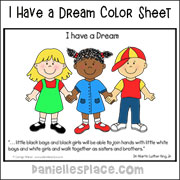
You will find a Bible lesson that goes along with this book with crafts and activities on The Resource Room.
"The Crayon Box that Talked"
This short story is about a bunch of crayons that couldn't get along, but at the end of the story, when they see a beautiful picture with all the colors in it, they realize that each one them is important and beautiful in their way.

Make a crayon box display and move the crayons as they speak in the story.
“I don’t like Red!” said Yellow,
And Green said, “Nor do I!
And no one here likes Orange,
But no one knows just why.”
At the end of the story the crayons realize that they are all very important when they see a beautiful picture being drawn by the author. You can also draw the picture as you tell the story.
You can find a this craft on the Martin Luther King Jr. Crafts Page
"A Pig is Moving In" by Claudia Fries
A Pig is Moving In is about animals who live in an apartment building. When an apartment becomes vacant they find out that a pig is moving in. They are all very worried because everyone knows that pigs are messy. They all decide before they even meet him that they don't like him. On moving day each of the animals see Pig at different times while he is moving in.
They don't talk to him, but do notice the messes he is making. What they don't notice is that he comes back each time to clean up his mess. They tell each other about all the messes Pig makes, getting very upset. They decide to confront Pig and tell him he needs to behave properly if he wants to live in their apartment building. When they get to his apartment and Pig opens the door a sweet smell of cinnamon floats out. When they tell him that they noticed the messes, he apologizes and says he hopes he cleaned them all up properly. All the animals were very surprised and embarrassed that Pig had picked up the messes. Pig invited them in for tea and cookies, and they learned not to judge others before getting to know them.
Peg
"Peg " by Maddie Stewart - ISBN 0-7787-0841-1
This is a great book about compassion and loving others the way they are. Peg is a book about a one legged hen. A farmer doesn't want Peg because she only has one leg. He leaves her behind for the fox to find. Lucky for Peg, Benjamin Bottomly finds her and takes her home to his father’s farm. Peg wants to be a mother so Benjamin gets her a very large egg to hatch. When it hatches the baby is an ostrich who thinks Peg is a wonderful mother. Benjamin keeps bringing home eggs from different types of birds for Peg too hatch. When one of the beautiful hens makes fun of Peg for being floppy, lame, and plain, Peg's children all say "That is our mother and we love her!"
Harriet the hedgehog sees hundreds of butterflies dancing in the sunshine, and can't help but stop and dance with them. She twists and turns and skips and hops. She is the happiest hedgehog in all the world. But then she notices that the butterflies have stopped dancing, and she is dancing all alone. She asks the butterflies to dance with her, but they say they don't want to because they only dance with butterflies. This made Harriet very sad. Harriet hurries away as fast as she can so the butterflies won't see her crying.
Harriet Dancing
Children of all ages will love "Harriet Dancing" by Ruth Symes. The pictures are simple and adorable, and the story will touch their hearts.
Later she meets her friends and they start dancing together. The butterflies see how much fun they are having and ask if they can join in. Harriet says, "Of course!" without hesitation,
"Dancing's for everyone, BIG and small. Dancing's for sharing with one and all."
After reading this story make the dancing hedgehog craft below and talk about discrimination.
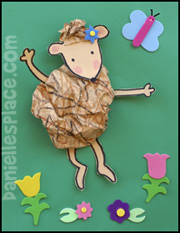
See the Hedgehog Crafts and Learning Activities Page for crafts and Activities to go along with this book.

